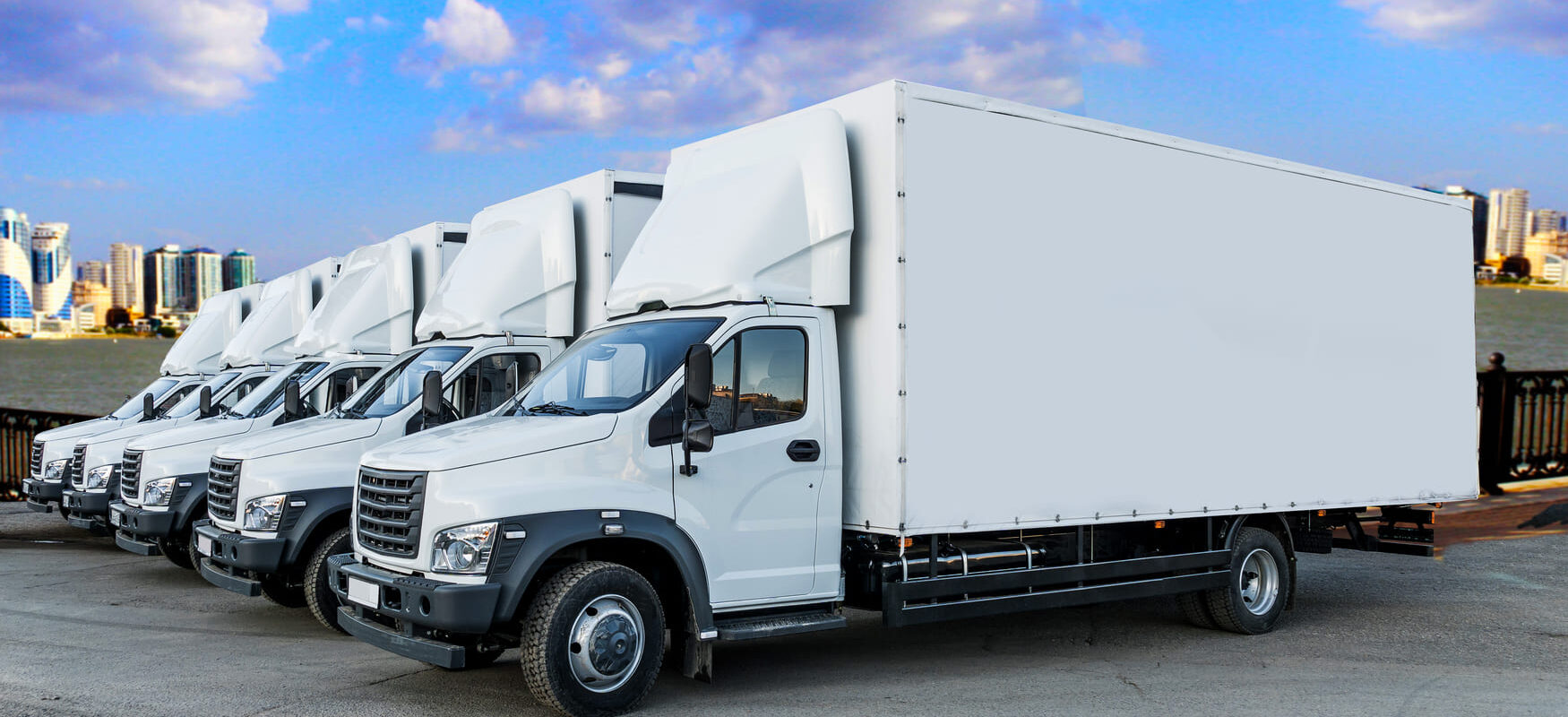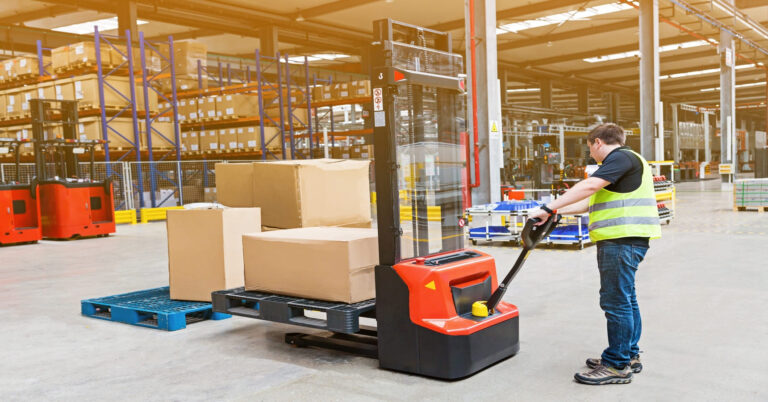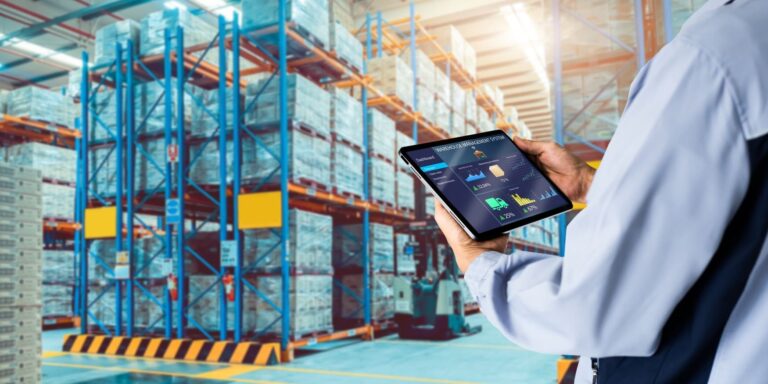Box Truck Sizes: Comparing Length, Volume & Payload

Box trucks (also called cube or straight trucks) have a rectangular cargo box mounted directly on the truck chassis behind the cab. They are the workhorses of logistics, used for local deliveries, moving household goods, and regional freight transport. Box truck sizes vary greatly: typical lengths range from about 10 feet up to 26 feet in length, resulting in a wide span of cargo volumes and weight capacities. For example, a small 10′ box truck might offer around 400 cubic feet of space, whereas a large 26′ truck can provide over 1,600 cubic feet of cargo volume and carry 10,000–12,000 lbs of payload.
Below, we break down the common size categories, dimensions, and capacities of box trucks to help you determine which type best fits your needs.
Common Box Truck Sizes & Dimensions (Chart)
Box trucks are typically classified by length (and corresponding weight class). For practical purposes, most standard box truck sizes fall into three groups: light-duty, medium-duty, and heavy-duty. Light-duty box trucks are usually around 10–16 ft long (Class 2–3 vehicles with GVWR up to ~14,000 lbs). Medium-duty box trucks range roughly 16–26 ft in length (Class 4–6, up to ~26,000 lbs GVWR). Heavy-duty box trucks are those that exceed 26 ft or 26,000 lbs GVWR (Class 7–8) – these often require a commercial license to operate. Common U.S. box truck lengths include 10′, 15′, 16′, 17′, 22′, and 26′.
Below is a box truck size chart comparing these common sizes by their interior dimensions, cargo volume, and payload capacity:
| Truck Size | Interior Dimensions (L×W×H) | Cargo Volume | Payload Capacity | Typical Use Case |
|---|---|---|---|---|
| 10′ Box Truck | 9′11″ × 6′3″ × 6′1″ | ~402 cu. ft. | ~2,850 lbs | Studio/1-bedroom moves; small deliveries |
| 16′ Box Truck | 16′0″ × 7′7″ × 6′6″ | ~800 cu. ft. | ~4,300 lbs | 2–3 bedroom moves; retail deliveries |
| 17′ Box Truck | 16′9″ × 7′8″ × 7′2″ | ~865 cu. ft. | ~6,160 lbs | Larger apartment moves; extra capacity |
| 22′ Box Truck | 21′11″ × 8′1″ × 8′1″ | ~1,200 cu. ft. | ~10,000 lbs | 3–4 bedroom homes; commercial deliveries |
| 26′ Box Truck | 26′2″ × 8′1″ × 8′3″ | ~1,682 cu. ft. | ~12,859 lbs | 4–5 bedroom moves; heavy equipment |
Choosing the Right Box Truck for Your Needs
- Assess volume vs. payload: Calculate your cargo volume (ft³) and weight. A 26′ truck has roughly 4× the volume of a 10′ truck. But heavier payloads require larger trucks: e.g., a 10′ truck carries only ~2,850 lbs, whereas a 26′ can handle over 12,800 lbs. Choose a truck size that can accommodate both the bulk and the weight of your load.
- Match to use-case: Small local deliveries or studio moves → 10–14′ trucks. Medium moves (apartment or small office) → 16–22′ trucks. Large home moves or big equipment → 26′ trucks.In general, use smaller trucks for lighter, shorter routes and large trucks for big loads or whole-house moves.
- Check height and width: Most box trucks are about 8 feet wide, which is standard for road lanes. Height varies by model (~6–8′ interior height), which translates to roughly 9–13′ total exterior height from the ground for small vs. large trucks. Taller interior ceilings make it easier to stack pallets or furniture. If you need to fit very tall items (large wardrobes, commercial equipment, etc.), opt for a truck with a higher interior clearance. Also be mindful of the truck’s overall height for bridge and overpass clearances – for instance, a 26′ box truck is about 12.5 ft tall on the outside
- Licensing and regulations: In general, trucks above 26 ft (or Class 7–8, over 26,000 lbs GVWR) require a commercial driver’s license. Many 26′ trucks are Class 6 (up to 26,000 lbs) and may not require a CDL. Always verify local laws.
Box Truck Use-Cases by Size
- 10–14 ft (Light Duty): Best for local deliveries, small retail shipments, or 1–2 room moves. U-Haul notes that 10′ trucks are commonly used for studio or 1BR moves, fitting a king bed, loveseat, and other small furniture. Cargo vans (~10 ft) also fall in this class.
- 15–17 ft (Medium Duty): Good for 2–3 bedroom homes or larger retail loads. For example, a 15′ truck comfortably holds a washer/dryer, sofa, dining set and more. A 17′ truck has ~865 cu.ft. to move larger apartments. These trucks often have loading ramps and lower decks for heavier items.
- 22–24 ft (Larger Medium Duty): Suited for 3–4 bedroom houses or commercial deliveries. The interior (~1,200 cu.ft.) and 10,000-lb capacity allow moving full apartment contents or bulky equipment. Many local movers and delivery fleets use 22–24′ trucks for regional routes.
- 26 ft (Heavy-Duty): Largest commonly rented size. With ~1,682 cu.ft. and over 12,800-lb payload, it handles 4–5 bedroom moves, business inventory shifts, or construction loads. U-Haul’s 26′ “Super Mover” is meant for whole-house moves. Because of its size, some uses (like large tractor units) may require CDL.
Box Truck Market Outlook (2023–2030)
The box truck industry is experiencing notable growth. According to Cognitive Market Research, the market is expected to grow at a compound annual growth rate (CAGR) of 5.5% from 2023 to 2030. This steady expansion is driven by increasing demand across several sectors, particularly e-commerce, retail, and urban logistics.
Key market trends include:
- Rise of Electric & Hybrid Trucks: Manufacturers are introducing more electric and hybrid box trucks, reflecting a shift toward sustainability and fuel efficiency in transportation. Many companies are starting to adopt electric box trucks for local deliveries as a way to cut fuel costs and meet environmental regulations.
- Sustainability Initiatives: Stricter emissions rules and corporate sustainability goals are pushing fleets to go greener. This means older diesel box trucks are gradually being replaced by cleaner alternatives. Governments are also incentivizing eco-friendly commercial vehicles, accelerating the adoption of electric box trucks as a fast-growing segment.
- E-Commerce Boom: The explosion of online shopping has increased demand for reliable last-mile delivery solutions. Box trucks hit a sweet spot – they offer much more space than a van but are easier to maneuver in neighborhoods than a semi-trailer. As e-commerce continues growing, so does the need for medium-sized delivery trucks to get orders to customers’ doorsteps efficiently.
- Urban Delivery Growth: Cities are expanding, and urban congestion is a challenge. Box trucks are increasingly favored for inner-city freight because they can navigate tight streets while still carrying a substantial load. In dense urban areas, smaller box trucks (under 26′) can often perform deliveries that larger 18-wheelers cannot, helping to solve the “last mile” problem in logistics.
Overall, the outlook confirms that box trucks will remain a vital part of modern supply chains. We can expect to see continued innovation in this space – from better fuel economy and electric drivetrains to smarter telematics, all aimed at making box trucks more efficient and cost-effective for businesses.
Conclusion
Selecting the right box truck size comes down to balancing the volume of cargo and the weight of that cargo for your specific needs. A good approach is to slightly overestimate – choose a truck that is big enough to handle a little more than what you plan to carry, so you’re not cramming it full or risking overloading. For small moves or deliveries, a light-duty truck in the 10–16 ft range will be most efficient. Larger home moves and heavy loads will require a 22–26 ft truck to get the job done in one trip. By carefully considering your cargo (both its bulk and its weight), you can ensure you choose the most efficient box truck size for the task at hand.
Frequently Asked Questions (FAQ) – OLIMP Warehousing
Q: What are the most common box truck lengths?
Common sizes range from about 10′ up to 26′. Small box trucks are ~10–15′ long, medium are ~16–22′, and the largest is 26′ (Super Mover). 10–16′ trucks are considered light-duty (no CDL), and 16–26′ are medium-duty.
Q: Which size do I need for a 2–3 bedroom move?
Typically a 16′–17′ box truck works well for 2–3 bedrooms, providing ~800–865 cu.ft. (e.g. Penske’s 16′: 800 cu.ft., 4,300 lbs; U-Haul’s 17′: 865 cu.ft., 6,160 lbs). For heavier loads or extra furniture, a 22′ truck (1,200 cu.ft.) might be chosen instead.
Q: How much weight can a box truck carry?
Payload depends on class/size. A small 10′ truck is rated around 2,800–3,000 lbs payload. A 16′ medium truck carries ~4,300 lbs, and a full 26′ truck can carry ~12,800 lbs. (These are cargo weight limits, separate from cargo volume.)
Q: Do I need a CDL to drive a box truck?
In the U.S., a commercial license is usually required for trucks over 26,000 lbs GVWR (Class 7+). According to industry guides, box trucks longer than 26′ or above Class 6 often require a CDL. 26′ trucks are often class 6 (up to 26,000 lbs), so a CDL may not be needed. Always check state regulations and the truck’s GVWR.
Q: What’s the difference between the listed length and interior space?
The “length” refers to the box length (external trailer). Interior cargo length is slightly shorter due to thickness and cab overlap (e.g. a 26′ truck has ~25′11″ interior). Height and width can also vary by model. Our table uses interior dimensions since cargo space drives usage.
You may be interested in

Common Misconceptions in Warehousing: Myths vs. Reality
Warehouses are integral to today’s supply chains, yet many still see them as simple storage space. In reality, efficient warehouses manage inventory, fulfill orders, coordinate cross-docking, and even perform value-added tasks like packaging or assembly. This has become even more critical as global commerce grows – for example, about 6.6 million Americans worked in transportation […]

Improve Supply Chain Efficiency with Smarter Warehousing
Efficient supply chain management is essential for any business aiming to remain competitive in today’s fast-paced market. In this article, we will explore how optimizing warehousing plays a crucial role in enhancing supply chain efficiency. From inventory management to technological advancements, we will cover various strategies that can help streamline operations and improve overall performance […]

How to Choose an LTL Carrier for Low‑Damage Freight Shipping
In the world of logistics, less‑than‑truckload (LTL) carriers play a pivotal role by consolidating shipments from multiple shippers so each customer only pays for the space they use. Because LTL freight is handled at multiple terminals, it’s more vulnerable to damage than full‑truckload shipments. Industry data show that typical LTL damage ratios range from 1 % […]
Ready to streamline your warehousing needs?
Request a quote today and discover how OLIMP's tailored solutions can optimize your operations